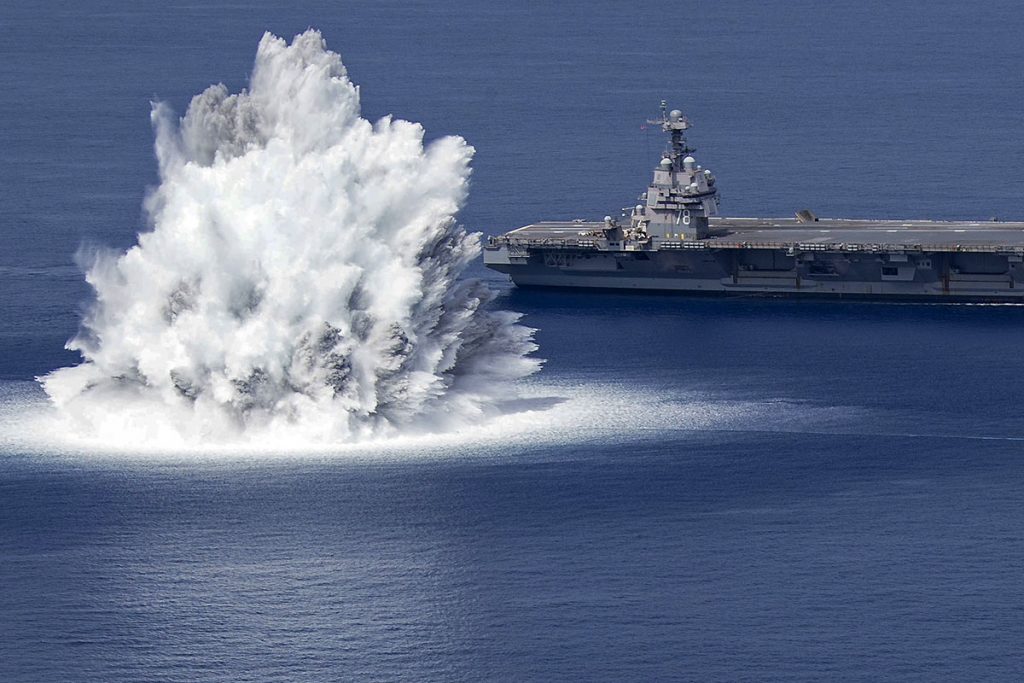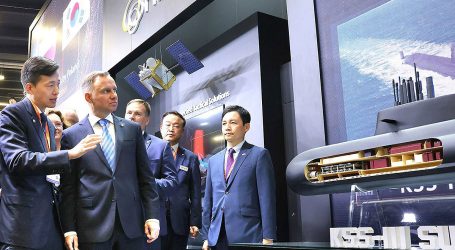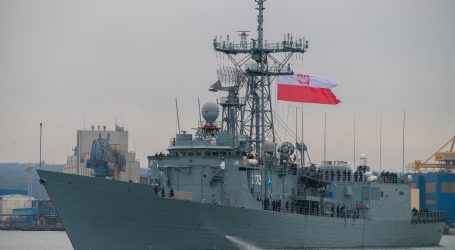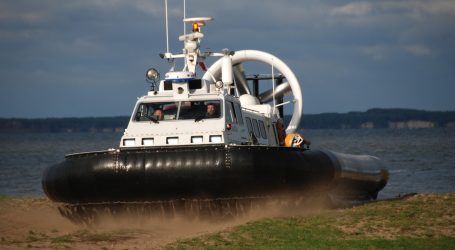Shakedown test of aircraft carrier USS Gerald R. Ford
The next-generation aircraft carrier USS Gerald R. Ford (CVN-78) underwent the first of its scheduled shock tests with a high explosive initiated a short distance from the ship as part of the so-called Full Ship Shock Trials (FSST) in the Atlantic Ocean June 18, 2021. It can be said that the ship was near the epicenter of a magnitude 3.9 earthquake.
The U.S. Navy subjected its newest aircraft carrier to a nearby fired explosive of thousands of kilograms last Friday in the Atlantic Ocean to simulate the ship’s behavior under combat conditions.
The aircraft carrier USS Gerald R. Ford, equipped with sensors that measure the force and effects of shocks, was subjected to the blast about 100 nautical miles off the coast of Florida just before 4 p.m. local time Friday, June 18.
The U.S. Geological Survey recorded the explosion as a magnitude 3.9 earthquake.
The first-of-its-kind aircraft carrier was designed using advanced computer modeling, testing and analysis to ensure the ship is resilient enough to withstand combat conditions, and these shock tests provide data used to validate the ship’s shock resistance (called shock hardness), the U.S. Navy said in a statement Saturday.
The U.S. Navy has conducted FSSTs for several decades, most recently for the Littoral Combat Ships USS Jackson (LCS-6) and USS Milwaukee (LCS-5) in 2016; as well as for the San Antonio-type landing ship USS Mesa Verde (LPD-19) in 2008, and the multipurpose landing ship USS Wasp (LHD 1) in 1990 and the missile cruiser USS Mobile Bay (CG-53) in 1987. The last aircraft carrier to pass FSST trials was the USS Theodore Roosevelt (CVN-71) in 1987.
Ford’s commanding officer, Capt. Paul Lanzilotta told USNI News Service aboard the aircraft carrier back in March that the crew was busy preparing for the event.
It’s quite a bit of work when you have a ship with 5,000 spaces, and we have to get all our equipment ready, Lanzilotta said at the time. ‘We also prepare the crew: the crew has to know what to expect, they have to practice their damage control procedures because that’s something we all have to be good at, and when we shock the ship, we have to make sure we have the ship in as full a state of readiness as possible.
The shock test just conducted ends a period of testing and rehearsal following the shipyard’s handover of the aircraft carrier in which the Navy worked to prepare Ford for her initial deployment.
Three separate explosions were anticipated, but the Navy may choose to limit the testing to two explosions.
Shock testing was considered for only the second ship in the series, but shock testing of the first Ford ship, rather than the second in the series, the John F. Kennedy (CVN-79), was initiated and pushed through Congress by Republican Senator John McCain, who died in 2018. He pushed for the trials to prove the reliability of the new class of aircraft carriers before their initial employment.
The U.S. Navy’s shock tests, or formally the Full Ship Shock Trial (FSST), are not intended to damage the ship or cause danger to anyone on board, but rather to cause a shock, affecting all structural and equipment components, to observe and see if sensitive systems or other structural components may be particularly vulnerable. If there were problems, damage or injuries, it would be a clear sign that more work needs to be done on the ship before sending it on potentially real combat missions.
The U.S. Navy conducts shock tests in accordance with Office of the Chief of Naval Operations Instruction 9072.2 and as mandated by the National Defense Authorization Act of 2016. Congress provides specific funding in the budget for conducting such tests.
rel. PortalMorski.pl




